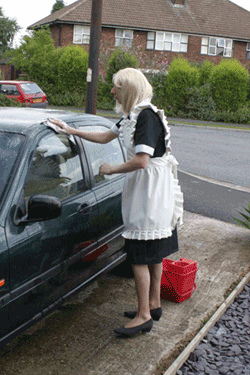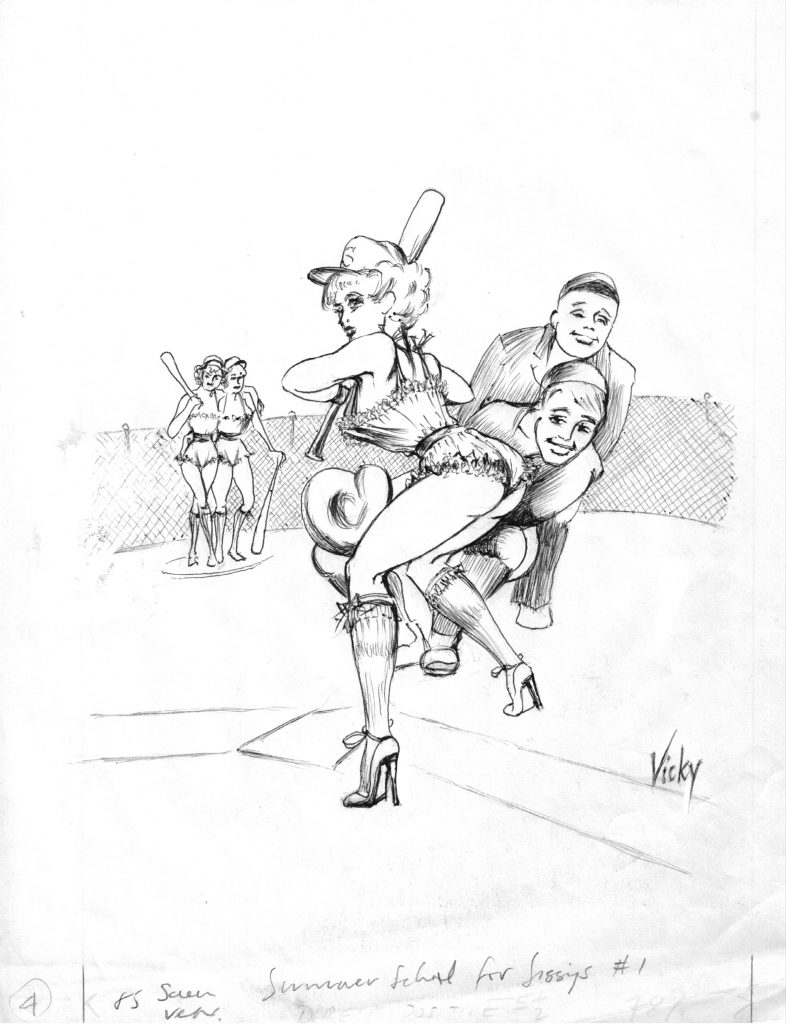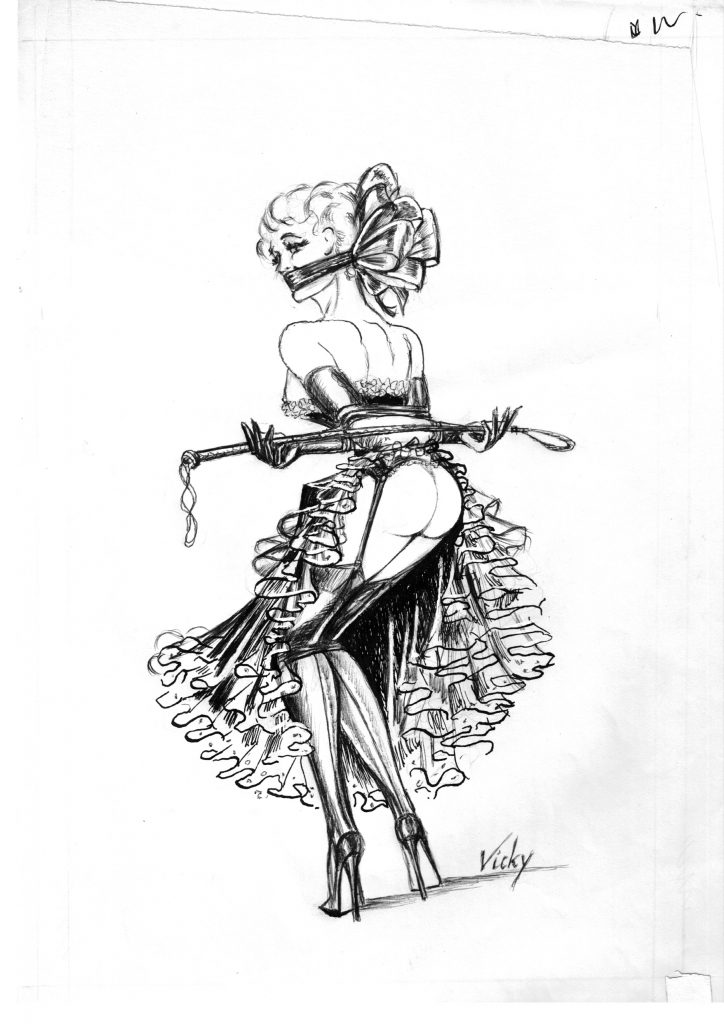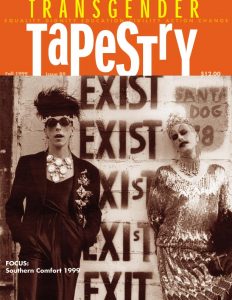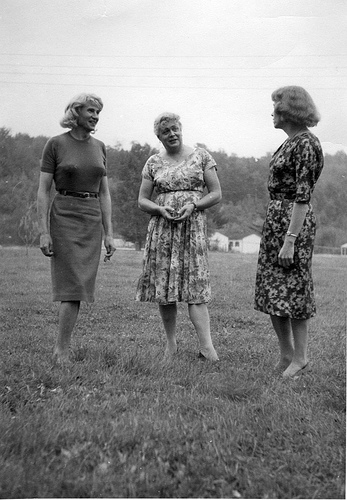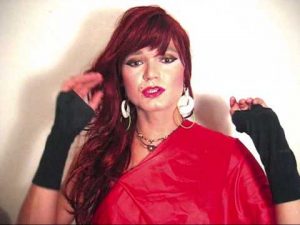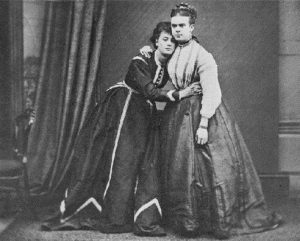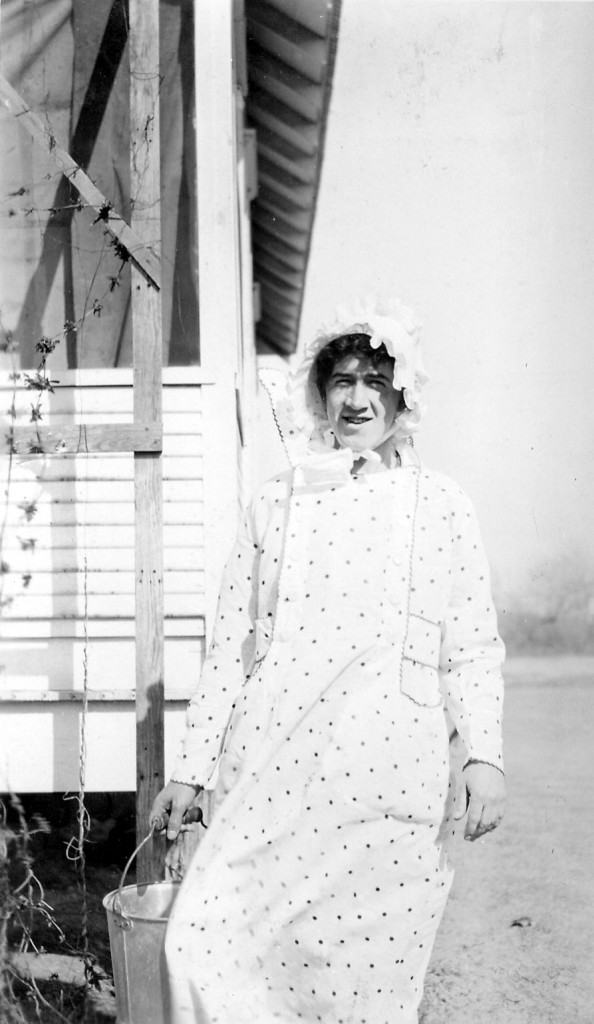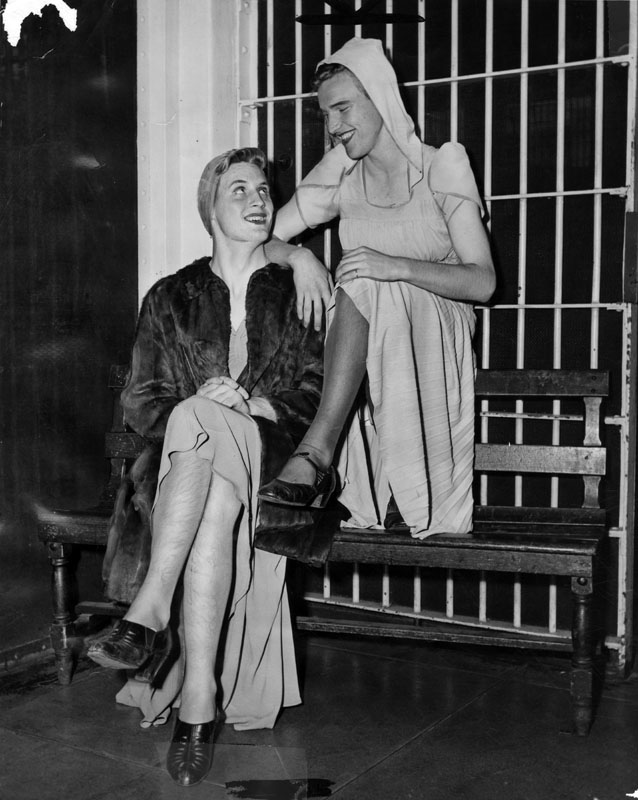Crossdressers Across the Decades (NSFW)
©2012 by Dallas Denny
Crossdressers, it has often been claimed, tend to dress like their mothers. I doubt that’s true, but crossdressers are more free than transsexuals to dress in stylized or fetishistic ways in public. Why? Because their public appearances aren’t tied to their ordinary lives and to the extent they dare, they can live out their fantasies without affecting their male personas.
Some crossdressers take their fetishism into public. Mandycduk1 says of the following Flickr photo, “No point having a maid who is afraid to be seen in public.” More power to her.
Crossdresser art takes the imaginations of crossdressers to the extreme, as in this pencil sketch by illustrator Vicky West, which was destined for Summer School for Sissies:
Here’s another of Vicky’s sketches:
Many and perhaps most crossdressers dress only in their homes or in hotel rooms, where they can indulge their fantasies without fear. Even those not particularly inclined toward fetishism tend to wear clothing women rarely or never wear– I think to a large extent because it takes extreme clothing and makeup on male bodies to produce the images of femininity they desire. Photos like this one from an early 1960s issue of Transvestia, were once common in community publications:
In private, at community events, and when making political statements, crossdressers can be as outrageous as they like. Here’s a cover treatment by Margaux Schaefer which I was unable to get approved when I was the editor of Tapestry.
When crossdressers appear on the street however — when away from support group meetings and drag clubs, they almost always do their best to pass. Depending upon body type and expertise, some are more successful than others. Here’s a photo from the 1950s, taken at a gathering…
… and here’s the late International Chrysis:
Due perhaps, to businesses that sell products to help them with their appearance; to the Internet, which is full of sources to help them learn their craft; and to a breakdown of the categories crossdresser and transsexual (which allows them increased access to electrolysis, hormones, and plastic surgery), today’s crossdressers are more likely to have more sophisticated presentations than the crossdressers of yore. Compare this picture of a young crossdresser in the mid-twentieth century…
… to these images, which came up Nos. 3 and 4 in a Google search of the term crossdresser:
When in public, crossdressers’ garb closely reflects the gendered clothing of the time. This is hardly surprising; everybody’s clothing does. Why should crossdressers be an exception?
I conclude with assorted photos of crossdressers from around 1870 or so through the 1970s. Next month I’ll look at the sartorial styles of transsexuals over the decades.
Category: Style, Transgender History


